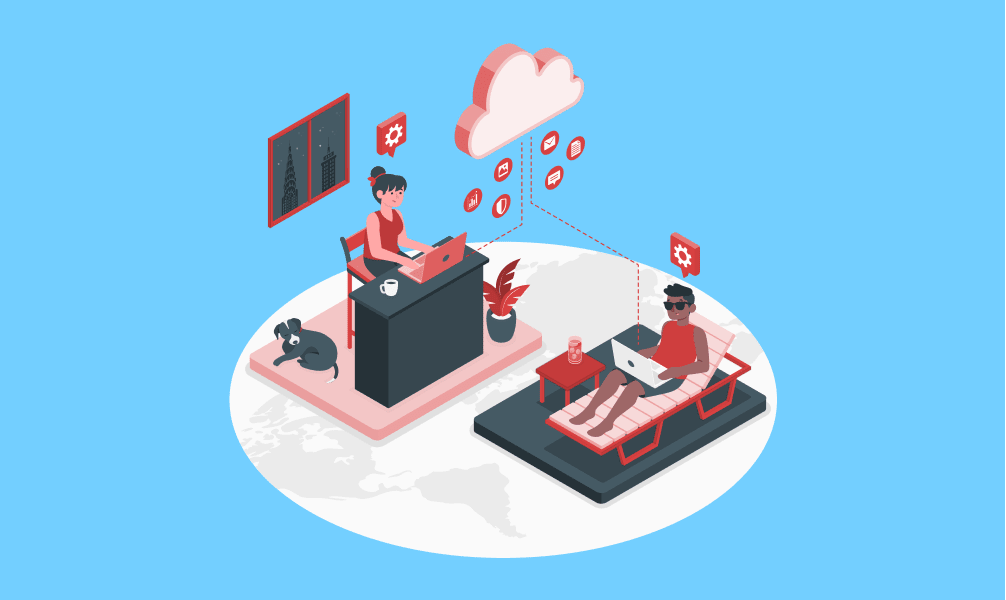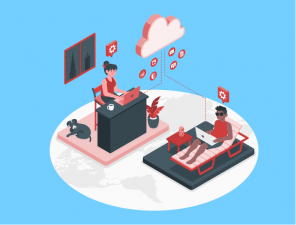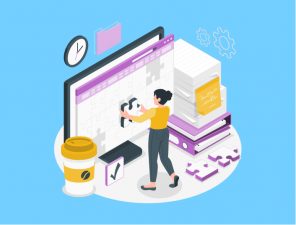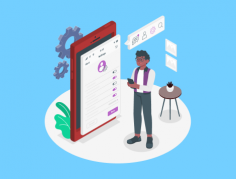- System Features
- FAQ
- Blog
- Contact Us

The coronavirus epidemic, which started to affect our country at the beginning of 2020 and still affects our lives without slowing down, caused the formation of new norms in working life and the development of working models. The most effective of these working models is undoubtedly the hybrid working model. So, what is the hybrid operating model and how is it applied? In this article, we will try to clarify these two issues.
What Does the Hybrid Operating Model Mean?
The hybrid working model has revealed a more flexible working model in contrast to the traditional working life. The hybrid working model, which is a suitable method for both slowing down the spread of the epidemic until social immunity is achieved and minimizing the psychological pressure caused by the epidemic, also stands out by providing more freedom and flexibility to the employees.
Employees in businesses that switch to the hybrid working model do not come to the office on certain days of the week or except for essential conditions. For this reason, the model has been called a hybrid working model, since they continue to work both in the physical working environment and in the comfort of their own home.
How is the Hybrid Operating Model Implemented?
In the hybrid working model, the number of days employees spend in the office is reduced and the reality aimed by the working model is tried to be achieved. According to the organizational structure within the company, the employer determines which employee will be at the workplace on which days and the responsibilities that he will undertake in the remaining time. In this way, a situation arises where everyone knows the days they will be at the workplace and their responsibilities, away from the chaos; It is also important for the healthy conduct of company activities.
The hybrid working model, which is a complete hybrid system, should not be confused with remote working. Remote working is a system in which employees fulfill their duties and responsibilities without physically coming to the workplace. Unlike the hybrid working model, employees do not have to come to the office and physical environments of the company.
In a process where the pandemic forces us to reshape our lives, hybrid work also closes many gaps. While it is very difficult to establish a completely remote structure and ensure that this structure fully functions, the hybrid model can benefit from the advantages of mutual exchange of ideas and information from time to time.
What Are the Things To Consider When Switching To the Hybrid Operating Model?
Communication
It is essential to develop communication between employees who come to the workplace on different days and between employees and company management. In this way, the corporate identity, vision, mission and expectations of the company are clearly communicated to the employees. Otherwise, the disconnections that may arise may become obstructive in terms of company activities.
Confidence
Practices that will allocate the trust of both the employee to the workplace and the workplace to the employee should be designed. In this way, the employer makes sure that the employee will fulfill his responsibilities outside the office, while the employee will be sure that his work will be rewarded. This reward is not just a monetary reward. Appointment and assignment rights, recognition and similar factors are also effective.
Empathy
In the relations between the employee and the employer, empathy is the leading actor in the decision making of both parties by putting themselves in the other's shoes. Employees must understand the company's difficulties while coping with the process, and the employer must understand that the employee is struggling with the negative effects of the epidemic and act accordingly.
In an environment where empathy is not dominant, both parties may have expectations that cannot be realized, and this has the potential to disrupt the company's activities and, more importantly, the peaceful atmosphere within the company.
One of the most challenging processes in the hybrid working model is undoubtedly Human Resources Management. The HR department should undertake tasks such as organizing, training and motivating employees to keep the organization operational and achieve the targeted goals. We recommend you to meet Stafik, the first and only HR software specially designed for HR in such a challenging process management.


























